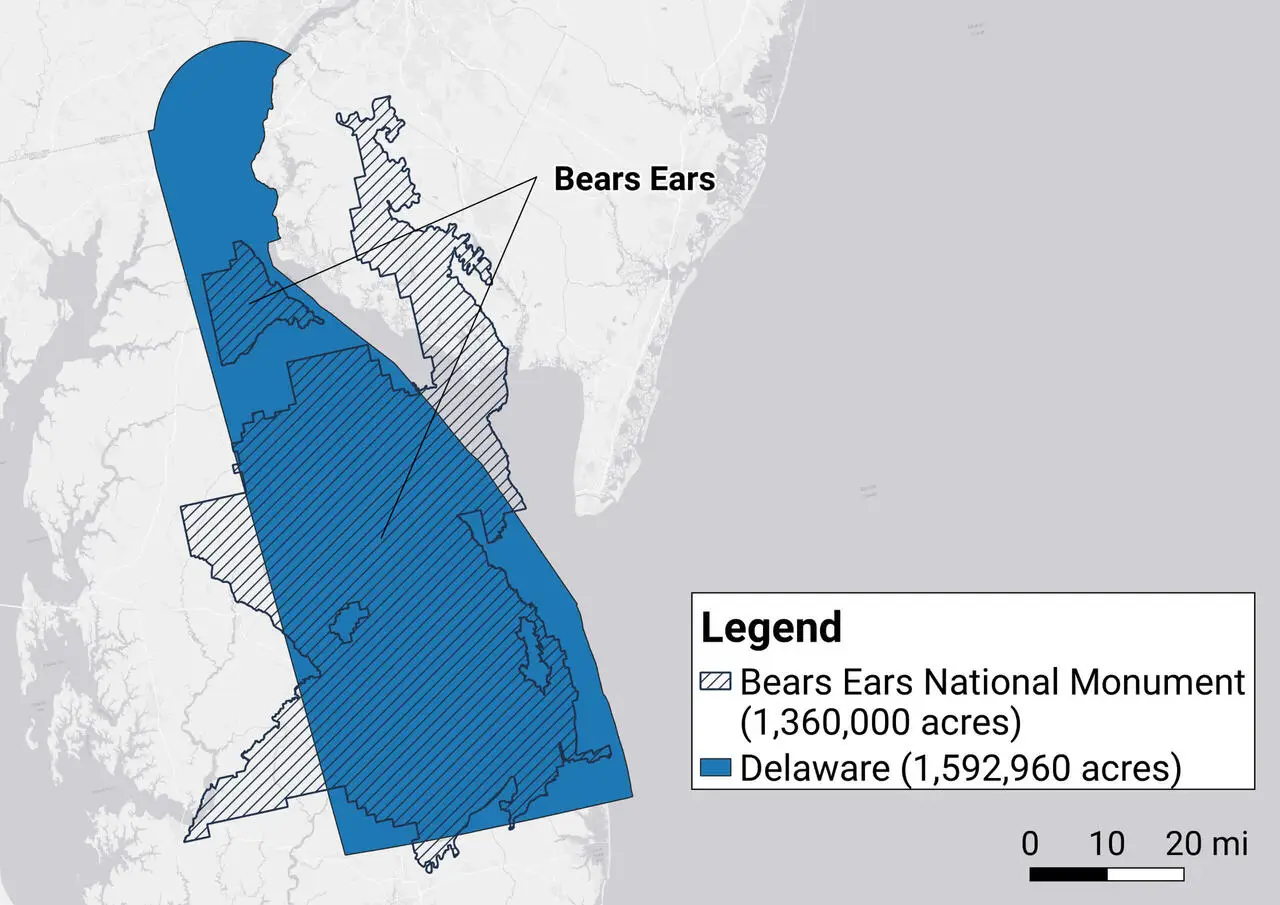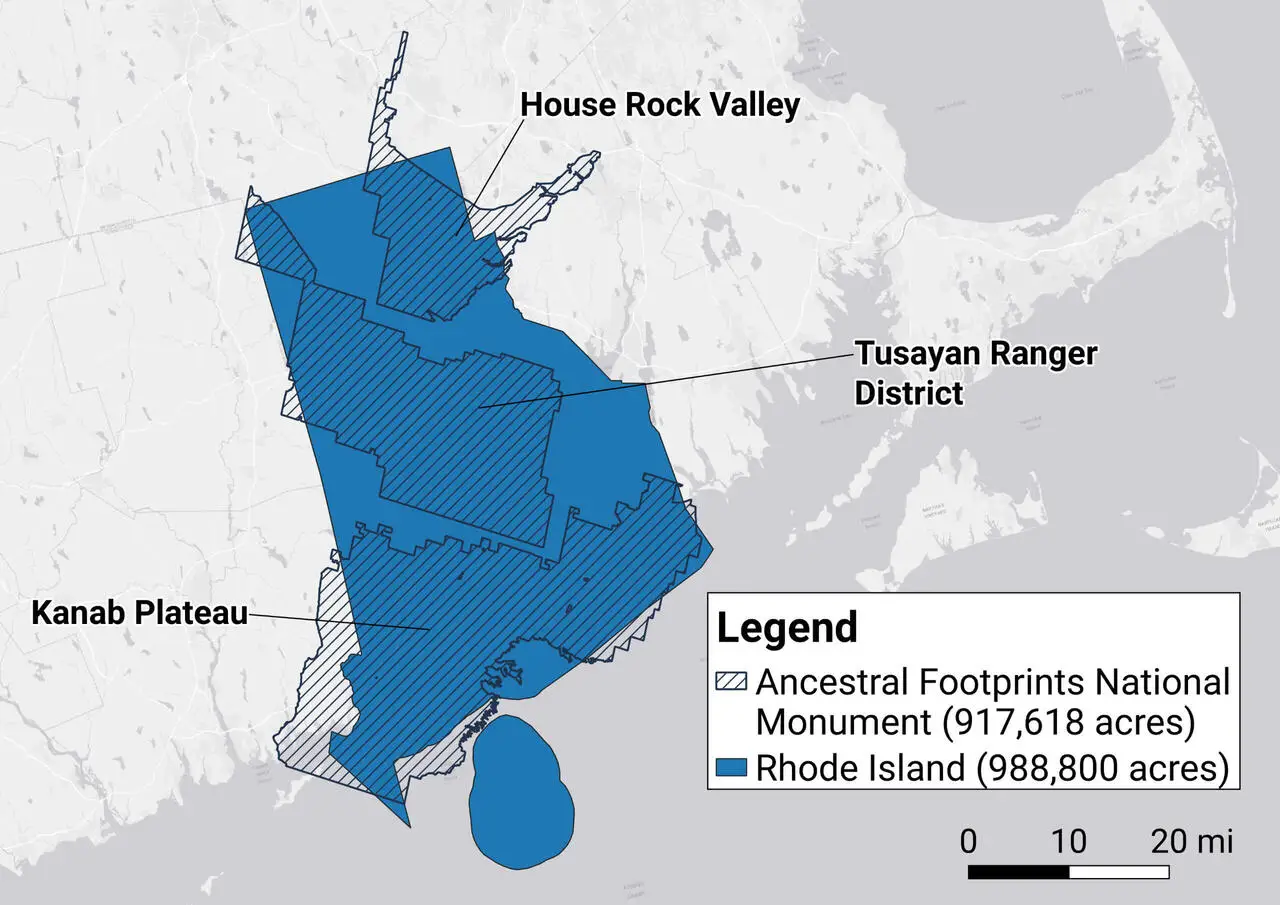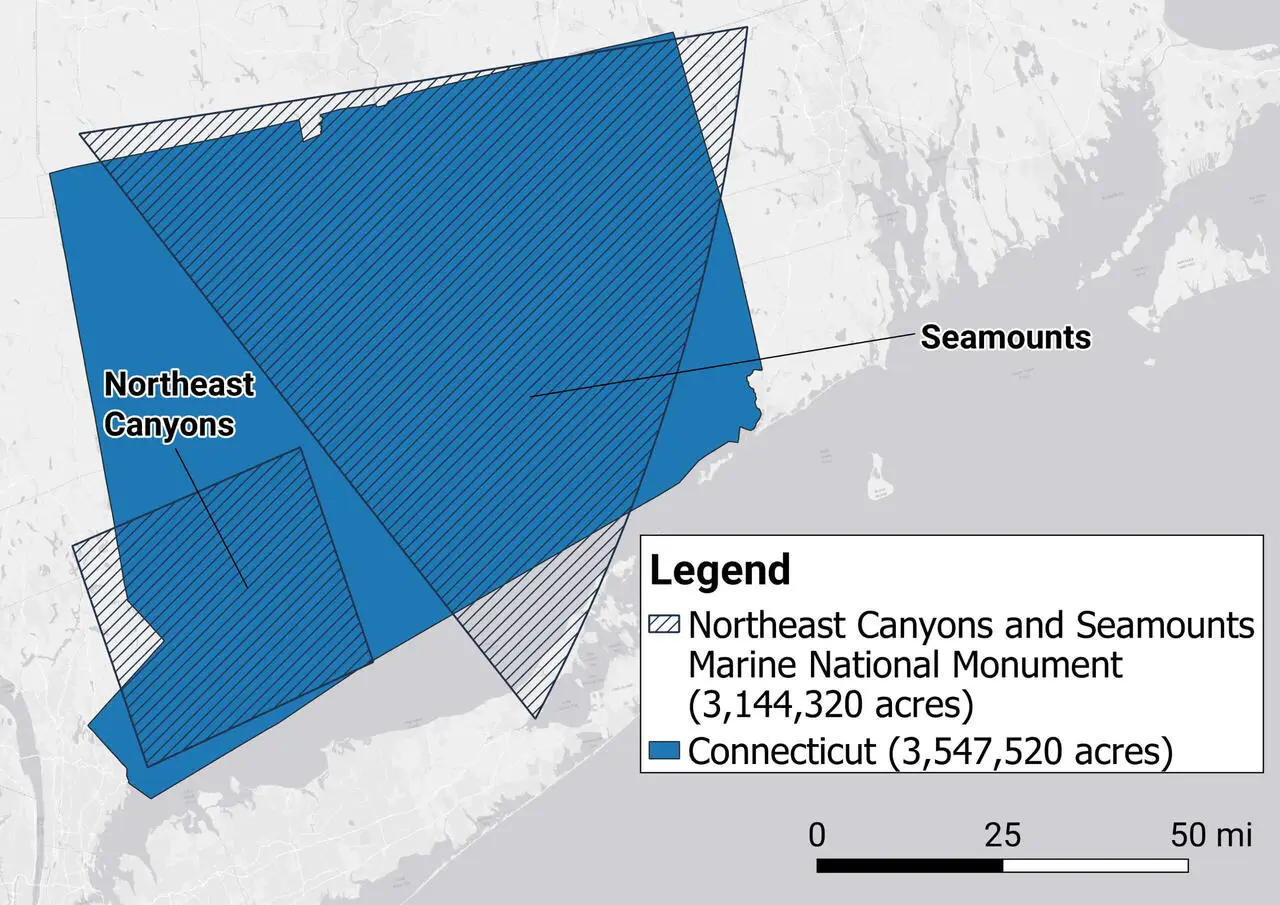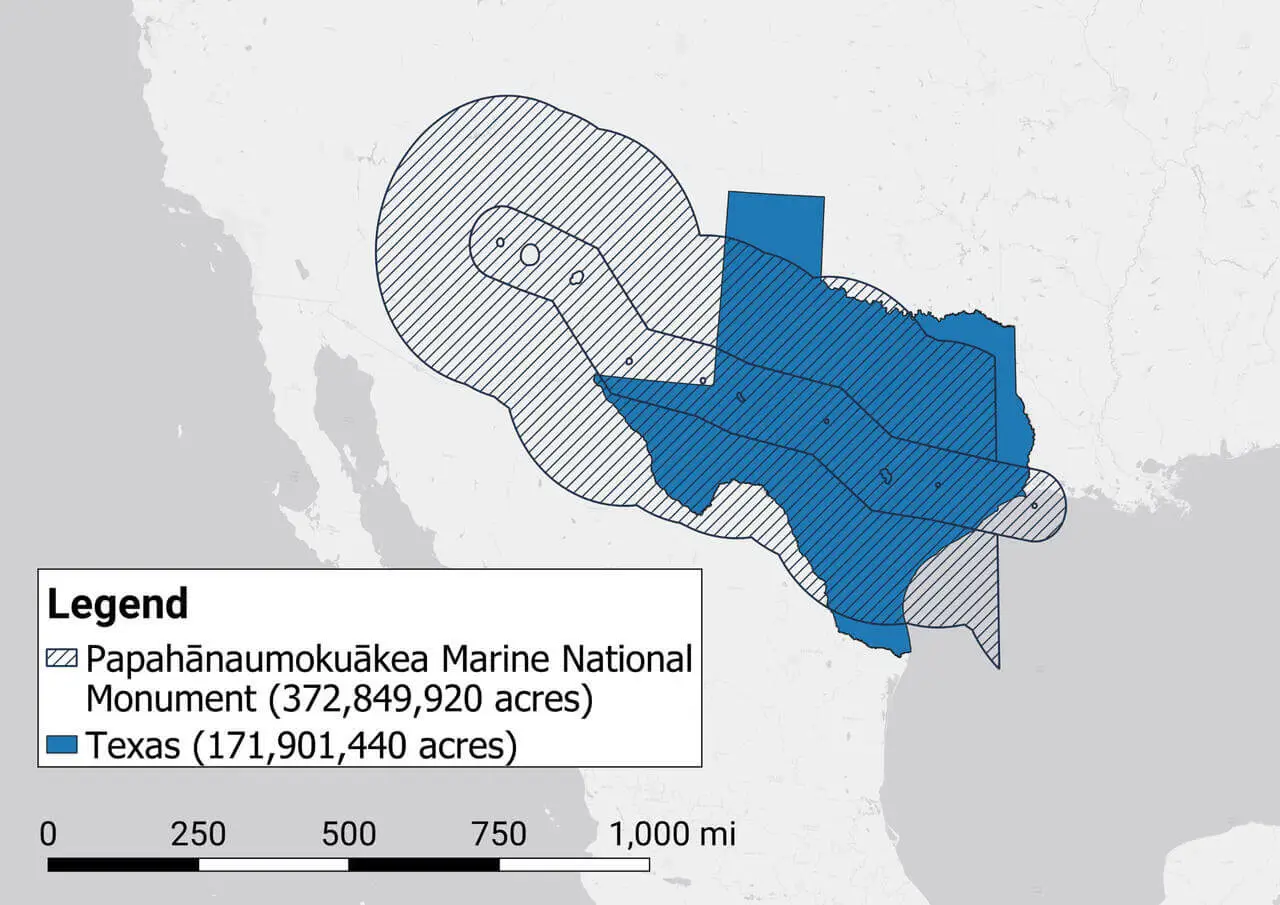With the Stroke of a Pen:
The Antiquities Act and Executive Discretion
Table of Contents
With the stroke of a pen, the president of the United States can cut off vast areas of federal land from all productive use. While Congress alone can designate national parks and wilderness areas, Congress has uniquely authorized the president to declare national monuments. Why did this happen?
By the late 1800s, historical and archaeological sites and objects west of the Mississippi River inspired not only professional archaeological interest but also private looting and destruction. To protect these “antiquities” as well as scientifically interesting natural features of the land, Congress passed the Antiquities Act in 1906.1 National Park Service, U.S. Department of the Interior, “Antiquities Act of 1906,” last updated March 30, 2023, www.nps.gov/subjects/archeology/antiquities-act.htm.
The Antiquities Act gave the president authority to unilaterally identify and preserve antiquities on federal land:
- Presidential Declaration.— The President may, in the President’s discretion, declare by public proclamation historic landmarks, historic and prehistoric structures, and other objects of historic or scientific interest that are situated on land owned or controlled by the Federal Government to be national monuments.
- Reservation of Land.— The President may reserve parcels of land as a part of the national monuments. The limits of the parcels shall be confined to the smallest area compatible with the proper care and management of the objects to be protected.2 54 U.S.C. § 320301(a)–(b).
Today, the federal government owns about 28 percent of all U.S. land—around 640 million acres. The U.S. Forest Service, Bureau of Land Management, Fish and Wildlife Service, and National Park Service manage most of that land.3 Congressional Research Service, Federal Lands and Related Resources: Overview and Selected Issues for the 118th Congress (Washington, DC: Congressional Research Service, February 2023), https://crsreports.congress.gov/product/pdf/R/R43429. In the western United States, most lands are federally owned (see Figure 1) and potentially available for reservation under the Antiquities Act. For example, about 80% of land in Nevada is federally owned.4 Congressional Research Service, Federal Land Ownership: Overview and Data (Washington, DC: Congressional Research Service, February 2020), https://sgp.fas.org/crs/misc/R42346.pdf.
Figure 1. Federal Lands as a Percentage of a State’s Area (as of 2022)
Source: Congressional Research Service, Federal Land Ownership: Overview and Data (Washington, DC, Congressional Research Service, February 2020), https://sgp.fas.org/crs/misc/R42346.pdf
When a new archaeological site is discovered on federal land, or if a scientifically important feature of the land is threatened, the president can act quickly to protect it. But that is not how presidents apply the law today.
Protecting the “Smallest Area Compatible”
The primary intent of the Antiquities Act was to protect invaluable artifacts and sites of historic or scientific interest on federal lands. Initially, following the law, presidents established relatively small monument areas with boundaries carefully tailored to preserve specific objects. President Theodore Roosevelt set aside 1,153 acres to protect Devils Tower in Wyoming as the first national monument in 1906. Roosevelt believed this area “sufficiently large to provide for the proper care and management of the monument.”5 National Park Service, U.S. Department of the Interior, “Early Conservationists,” June 4, 2022, www.nps.gov/deto/learn/historyculture/early-conservationists.htm.
Some national monuments are quite small, with boundaries drawn carefully around the antiquities they protect. In 2006, for example, President George W. Bush set aside approximately seven acres in New York City at the site of a historic African burial ground used from the 1690s to the 1790s.6 George W. Bush, “Establishment of the African Burial Ground National Monument,” The White House February 27, 2006, https://georgewbush-whitehouse.archives.gov/news/releases/2006/02/20060227-6.html. In 2016, President Barack Obama designated 0.12 acres in the Greenwich Village neighborhood of New York City as Stonewall National Monument, marking the primary site of the historic Stonewall Uprising of 1969.7 Barack Obama, “Presidential Proclamation—Establishment of the Stonewall National Monument,” The White House, June 24, 2016, https://obamawhitehouse.archives.gov/the-press-office/2016/06/24/presidential-proclamation-establishment-stonewall-national-monument.
Other monuments are large but still tailored to protect a specific object. For example, Roosevelt designated the Grand Canyon area as the Grand Canyon National Monument in 1908, setting aside 818,560 acres.8 National Park Service, U.S. Department of the Interior, “The Proclamation of National Monuments under the Antiquities Act, 1906–1970,” March 6, 2023, https://www.nps.gov/articles/lee-story-proclamation.htm. The monument was created to protect what Roosevelt called an “object of unusual scientific interest”—the Grand Canyon. Yet the designation established a precedent for large monuments going forward.
A Monumental Misuse of Executive Power
Over time, presidents have vastly expanded their use of the Antiquities Act. While the Act was meant to protect specific artifacts and natural objects, modern administrations have increasingly used it to designate vast landscapes and entire ecosystems to build presidential legacies.9 Pew Charitable Trusts, “New Ocean Monuments Give President Bush a Blue Legacy; Pew Applauds Historic Action,” January 5, 2009, https://www.pewtrusts.org/en/about/news-room/press-releases-and-statements/2009/01/05/new-ocean-monuments-give-president-bush-a-blue-legacy-pew-applauds-historic-action.
The open-ended definition of what constitutes an “object” has allowed presidents to use their power under the law as they see fit. In the 1970s, President Jimmy Carter set aside 56 million acres—nearly six times the acreage of all preceding presidents combined.10 Carter designated 56,045,000 acres, whereas earlier presidents designated 9,607,702 acres combined. FiveThirtyEight, “FiveThirtyEight Antiquities Act Dataset,” Kaggle, accessed April 14, 2024, https://www.kaggle.com/datasets/fivethirtyeight/fivethirtyeight-antiquities-act-dataset. Since then, five presidents designated additional monuments or, in the case of President Donald Trump, reduced the designated area of monuments.11 The five presidents were Biden, Trump, Obama, G. W. Bush, and Clinton. Congressional Research Service, National Monuments and the Antiquities Act (Washington, DC: Congressional Research Service, January 2024), https://sgp.fas.org/crs/misc/R41330.pdf. Figure 2 shows the cumulative acres designated as national monuments over time.
Figure 2. Cumulative Acres Designated Over Time (1973–2023)
Source: FiveThirtyEight, “FiveThirtyEight Antiquities Act Dataset,” Kaggle, accessed April 14, 2024, https://www.kaggle.com/datasets/fivethirtyeight/fivethirtyeight-antiquities-act-dataset; Congressional Research Service, National Monuments and the Antiquities Act (Washington, DC: Congressional Research Service, January 2024), https://sgp.fas.org/crs/misc/R41330.pdf; Richard H. Seamon, “Dismantling Monuments,” Florida Law Review 70, no. 3 (2019): 553–600.
Several monuments designated since the late 20th century encompass millions of acres. In fact, 90 percent of all acres designated under the Antiquities Act have been designated since 2000.12 FiveThirtyEight, “FiveThirtyEight Antiquities Act Dataset.” As Figure 3 illustrates, some modern monuments are about as large or larger than entire U.S. states.
Figure 3. Monuments as Large as States
A. Bears Ears National Monument vs. Delaware

B. Ancestral Footprints National Monument vs. Rhode Island

C. Northeast Canyons and Seamounts Marine National Monument vs. Connecticut

D. Papahānaumokuākea Marine National Monument—twice as large as Texas

Source: United States Census Bureau, “State Area Measurements and Internal Point Coordinates,” accessed April 17, 2024, https://www.census.gov/geographies/reference-files/2010/geo/state-area.html; Bureau of Land Management, “Bears Ears National Monument Management,” accessed April 17, 2024, https://www.blm.gov/programs/national-conservation-lands/utah/bears-ears-national-monument; Bureau of Land Management, “Baaj Nwaavjo I’tah Kukveni-Ancestral Footprints of the Grand Canyon National Monument,” accessed April 17, 2024, https://www.blm.gov/national-conservation-lands/arizona/ancestral-footprints; National Oceanic and Atmospheric Administration, “Northeast Canyons and Seamounts Marine National Monument,” accessed April 17, 2024, https://www.fisheries.noaa.gov/new-england-mid-atlantic/habitat-conservation/northeast-canyons-and-seamounts-marine-national; National Oceanic and Atmospheric Administration, “Papahānaumokuākea Marine National Monument,” accessed April 17, 2024, https://www.fisheries.noaa.gov/pacific-islands/habitat-conservation/papahanaumokuakea-marine-national-monument.
National Monuments Limit the Productive Use of Public Lands
Federal lands contain valuable resources including timber, minerals, and energy sources. Such resources are critical for supplying goods from agricultural products to lithium, which is used in renewable energy technology. In 2019, 22 percent of crude oil, 13 percent of natural gas, and 41 percent of coal produced in the United States came from federal lands. Renewable energy resources are also vast across the federal estate. In 2018, 40 percent of geothermal electricity capacity in the country was located on federal lands. Wind and solar production are increasing each year.13 Congressional Research Service, Federal Lands and Related Resources.
Federal law requires that federal lands be used for the benefit of the public—not only through public access and recreation, but also through development of natural resources. The Federal Land Management Policy Act of 1976 established a mandate of “multiple use and sustained yield” for public land management. That means that in addition to protecting environmental values, agencies must ensure that “the public lands be managed in a manner which recognizes the Nation’s need for domestic sources of minerals, food, timber, and fiber from the public lands.”14 Federal Land Management Policy Act of 1976, Pub. L. No. 94-579, 90 Stat. 2743 (1976), 43 U.S.C. § 1701 et seq.
Despite this mandate, presidential proclamations restrict the use of land within national monuments. Although designations typically respect existing leases for grazing and mining, they usually restrict future leases.15 Congressional Research Service, National Monuments. Designations that restrict all development of natural resources conflict with the mandate of multiple use and sustained yield.
Lobbying by special interest groups plays a significant role in determining which uses are permitted within a national monument and where monuments are designated in the first place. In the case of the Bears Ears National Monument, groups including the Leonardo DiCaprio Foundation, the Wyss Foundation, and the Grand Canyon Trust spent more than $20 million on lobbying.16 Amy Joi O’Donoghue, “Leonardo DiCaprio Foundation Writes a Check for Bears Ears ‘Engagement’ Fund,” Deseret News, January 12, 2017, https://www.deseret.com/2017/1/12/20603975/leonardo-dicaprio-foundation-writes-a-check-for-bears-ears-engagement-fund/.
Large monuments in the American West have often been controversial because the areas have significant natural resource potential. For example, Grand Staircase–Escalante National Monument in central Utah holds vast deposits of coal and oil sands.17 Utah Geological Survey, “Resource Overview for the Original 1996 Grand Staircase–Escalante National Monument Designation and Vicinity” (March 2021), accessed April 14, 2024, https://geology.utah.gov/publication-details/?pub=PI-103. Additionally, the designation of Ancestral Footprints of the Grand Canyon National Monument by President Joe Biden in 2023 controversially locked up valuable uranium deposits that could help provide emission-free nuclear energy.18 Bobby Magill, “Biden Protects Land by Grand Canyon but Will Still Allow Mining,” Bloomberg Law, August 8, 2023, https://news.bloomberglaw.com/environment-and-energy/bidens-grand-canyon-monument-declaration-wont-block-all-mining-1. Uranium is also a national-security resource. Currently, the United States gets most of its uranium from Russia and other former Soviet-bloc countries, and greater domestic production could reduce this dependence.19 Donald Trump, “Memorandum on the Effect of Uranium Imports on the National Security and Establishment of the United States Nuclear Fuel Working Group,” The White House, July 12, 2019, https://trumpwhitehouse.archives.gov/presidential-actions/memorandum-effect-uranium-imports-national-security-establishment-united-states-nuclear-fuel-working-group/. Although the Ancestral Footprints designation honors existing mining claims, it prevents any new claims.
So long as presidents can unilaterally designate national monuments and determine which resources will be restricted, the Antiquities Act will continue to be controversial.
Unchecked Executive Power Tramples Property Rights
Unlimited executive discretion under the Antiquities Act has made it a political tool rather than a legitimate avenue for protecting objects of historical or scientific significance. It has also limited the ability of Americans to exercise their property rights. New designations affect many families who rely on grazing rights or other uses of federal land to maintain their livelihood.
Monument designations sometimes even affect private land within their boundaries. When a monument completely encompasses their private land, private landowners can suffer impediments to the full use and value of their land. The value of their land may decline when new leases to use the surrounding federal lands are prohibited.
In Heaton v. Biden, Pacific Legal Foundation attorneys are representing Chris Heaton, whose family has ranched on the Utah–Arizona border since the 1800s. The sixth-generation rancher has 42 private water rights on the land, which directly affect his ability to tend to cattle in the area. When President Biden designated the Ancestral Footprints National Monument in Northern Arizona, he created uncertainty about the Heaton family’s ability to continue to graze cattle and work their land. That uncertainty includes the threat of criminal penalties for anyone who harms or removes protected objects within the monument. For example, it’s unclear whether the Heatons would be liable for criminal penalties if their cattle damage one of the protected objects within the monument.20 Pacific Legal Foundation, “Ranching Family Fights President Biden’s Antiquities Act Abuse: Heaton et al. v. Biden et al.” (n.d.), accessed April 5, 2024, https://pacificlegal.org/case/antiquities-act-grand-canyon/
The same problems exist for marine monuments. For example, in 2016 President Barack Obama designated 5,000 square miles of the Atlantic Ocean as a national monument—an area almost the size of Connecticut. The area was declared off-limits to local fishermen, who had relied on this area for their livelihood. In Massachusetts Lobstermen’s Association v. Ross, PLF sued on behalf of the fishermen, but the Supreme Court declined to hear the case.21 Pacific Legal Foundation. “Massachusetts Lobstermen’s Association v. Ross.” Accessed March 28, 2024. https://pacificlegal.org/case/massachusetts-lobstermens-association-v-ross/.
In Green v. National Oceanic and Atmospheric Administration, PLF is once again defending the longstanding right of local fishermen to earn a livelihood in the North Atlantic Ocean. Not only does the national monument proclamation limit commercial fishing, but a recent regulation by NOAA threatens potential fines of $100,000 per day, as well as revoking fishing licenses and placing liens on boats.22 Pacific Legal Foundation, “Fishermen Fight Illegal Fishing Ban: Green v. National Oceanic and Atmospheric Administration” (n.d.), accessed April 14, 2024, https://pacificlegal.org/case/green-antiquities-act-noaa/.
What Is the Solution?
The Supreme Court is long overdue to help define the limits of executive discretion under the Antiquities Act. Chief Justice John Roberts acknowledged the problem, writing that the Antiquities Act “has been transformed into a power without any discernible limit to set aside vast and amorphous expanses of terrain above and below the sea.”23 Pacific Legal Foundation, “President Obama’s Abuse.”
Establishing a clear standard of review would help provide certainty and predictability regarding the president’s legal authority to use the Antiquities Act. Standards are needed to help define what the president can and cannot designate as an “object” when setting aside federal lands for protection. Standards are also needed to help determine what constitutes the “smallest area compatible” when drawing the boundaries for a particular monument.
Another option would be for Congress to set limits on how many acres the president can designate without Congressional approval. Congress has already set state-specific limits on the Antiquities Act in both Alaska and Wyoming. After controversy over large monuments designated by President Carter, Congress passed the Alaska National Interest Lands Conservation Act, which limits the president’s authority to monument areas that are smaller than 5,000 acres. In Wyoming, a compromise between Congress and the president led to the creation of Grand Teton National Park. In exchange, no future monument designations are allowed in the state.24 Jonathan Wood, Monumental Debate–What Past Reforms of the Antiquities Act Can Teach Us about Current Controversies (Logan, UT: Center for Growth and Opportunity at Utah State University, September 2019), 7, https://www.thecgo.org/wp-content/uploads/2020/07/Monumental-Debate.pdf.
One argument against limiting presidential authority is that doing so would put the environment at risk. This is not the case. In fact, after state-specific limits were enacted in Wyoming and Alaska, Congress became more involved in setting aside protected lands in both states. This evidence suggests that limiting executive discretion under the Antiquities Act does not come at the expense of protecting important areas.25 Wood, Monumental Debate, 8.
All federal lands are already protected by environmental laws, regardless of their status as national monuments. These laws include the Endangered Species Act, the Migratory Bird Treaty Act, the Marine Mammal Protection Act, and the Clean Water Act. Each of these laws requires public participation through notice-and-comment processes before the government makes decisions about how to protect species or landscapes. Unlike the Antiquities Act, this system ensures that decisions about federal lands are made through a relatively democratic process rather than solely at the discretion of one person. Congress could at least require that Antiquities Act decisions be subject to the notice-and-comment provisions of the Administrative Procedure Act.
Besides, whether and how to remove large areas of economic significance from the American economy is a matter for Congress to decide, not the president. Whether through the legal system, congressional action, or both, presidential power under the Antiquities Act must be reined in. Doing so will help restore the proper separation of powers and protect property rights for Americans across the United States.
Sources
1 National Park Service, U.S. Department of the Interior, “Antiquities Act of 1906,” last updated March 30, 2023, https://www.nps.gov/subjects/archeology/antiquities-act.htm
2 54 U.S.C. § 320301(a)–(b).
3 Congressional Research Service, Federal Lands and Related Resources: Overview and Selected Issues for the 118th Congress (Washington, DC: Congressional Research Service, February 2023), https://crsreports.congress.gov/product/pdf/R/R43429
4 Congressional Research Service, Federal Land Ownership: Overview and Data (Washington, DC: Congressional Research Service, February 2020), https://sgp.fas.org/crs/misc/R42346.pdf
5 National Park Service, U.S. Department of the Interior, “Early Conservationists,” June 4, 2022, www.nps.gov/deto/learn/historyculture/early-conservationists.htm
6 George W. Bush, “Establishment of the African Burial Ground National Monument,” The White House February 27, 2006, https://georgewbush-whitehouse.archives.gov/news/releases/2006/02/20060227-6.html
7 Barack Obama, “Presidential Proclamation—Establishment of the Stonewall National Monument,” The White House, June 24, 2016, https://obamawhitehouse.archives.gov/the-press-office/2016/06/24/presidential-proclamation-establishment-stonewall-national-monument
8 National Park Service, U.S. Department of the Interior, “The Proclamation of National Monuments under the Antiquities Act, 1906–1970,” March 6, 2023, https://www.nps.gov/articles/lee-story-proclamation.htm
9 Pew Charitable Trusts, “New Ocean Monuments Give President Bush a Blue Legacy; Pew Applauds Historic Action,” January 5, 2009, https://www.pewtrusts.org/en/about/news-room/press-releases-and-statements/2009/01/05/new-ocean-monuments-give-president-bush-a-blue-legacy-pew-applauds-historic-action
10 Carter designated 56,045,000 acres, whereas earlier presidents designated 9,607,702 acres combined. FiveThirtyEight, “FiveThirtyEight Antiquities Act Dataset,” Kaggle, accessed April 14, 2024, https://www.kaggle.com/datasets/fivethirtyeight/fivethirtyeight-antiquities-act-dataset
11 The five presidents were Biden, Trump, Obama, G. W. Bush, and Clinton. Congressional Research Service, National Monuments and the Antiquities Act (Washington, DC: Congressional Research Service, January 2024), https://sgp.fas.org/crs/misc/R41330.pdf
12 FiveThirtyEight, “FiveThirtyEight Antiquities Act Dataset.”
13 Congressional Research Service, Federal Lands and Related Resources.
14 Federal Land Management Policy Act of 1976, Pub. L. No. 94-579, 90 Stat. 2743 (1976), 43 U.S.C. § 1701 et seq.
15 Congressional Research Service, National Monuments.
16 Amy Joi O’Donoghue, “Leonardo DiCaprio Foundation Writes a Check for Bears Ears ‘Engagement’ Fund,” Deseret News, January 12, 2017, https://www.deseret.com/2017/1/12/20603975/leonardo-dicaprio-foundation-writes-a-check-for-bears-ears-engagement-fund/
17 Utah Geological Survey, “Resource Overview for the Original 1996 Grand Staircase–Escalante National Monument Designation and Vicinity” (March 2021), accessed April 14, 2024, https://geology.utah.gov/publication-details/?pub=PI-103
18 Bobby Magill, “Biden Protects Land by Grand Canyon but Will Still Allow Mining,” Bloomberg Law, August 8, 2023, https://news.bloomberglaw.com/environment-and-energy/bidens-grand-canyon-monument-declaration-wont-block-all-mining-1
19 Donald Trump, “Memorandum on the Effect of Uranium Imports on the National Security and Establishment of the United States Nuclear Fuel Working Group,” The White House, July 12, 2019, https://trumpwhitehouse.archives.gov/presidential-actions/memorandum-effect-uranium-imports-national-security-establishment-united-states-nuclear-fuel-working-group/
20 Pacific Legal Foundation, “Ranching Family Fights President Biden’s Antiquities Act Abuse: Heaton et al. v. Biden et al.” (n.d.), accessed April 5, 2024, https://pacificlegal.org/case/antiquities-act-grand-canyon/
21 Pacific Legal Foundation, “President Obama’s Abuse of Antiquities Act Declares 5,000 Square Miles of Ocean Off-Limits: Massachusetts Lobstermen’s Association v. Ross” (n.d.), accessed March 28, 2024, https://pacificlegal.org/case/massachusetts-lobstermens-association-v-ross/.
22 Pacific Legal Foundation, “Fishermen Fight Illegal Fishing Ban: Green v. National Oceanic and Atmospheric Administration” (n.d.), accessed April 14, 2024, https://pacificlegal.org/case/green-antiquities-act-noaa/
23 Pacific Legal Foundation, “President Obama’s Abuse.”
24 Jonathan Wood, Monumental Debate–What Past Reforms of the Antiquities Act Can Teach Us about Current Controversies (Logan, UT: Center for Growth and Opportunity at Utah State University, September 2019), 7, https://www.thecgo.org/wp-content/uploads/2020/07/Monumental-Debate.pdf
25 Wood, Monumental Debate, 8.
About the Authors

Megan Jenkins
Megan Jenkins is PLF’s strategic research director. She leads policy research that outlines the size and scope of issues that threaten individual liberty and are core to PLF’s litigation priorities.

Keelyn Gallagher
Keelyn Gallagher is a strategic research analyst at PLF. Her research helps inform the public with numbers and data when our individual liberties are being infringed.

Kyle Sweetland
Kyle Sweetland is a research analyst at PLF. His data visualization and mapping skills help bring PLF’s research to life.
Acknowledgements
The authors would like to thank Frank Garrison, Adam Griffin, and Jacob Fishbeck for helpful feedback and expertise.
PLF is a national nonprofit legal organization that defends Americans’ liberties when threatened by government overreach and abuse. We sue the government in court when our clients’ rights protected by the Constitution are violated, and advocate for legislative and regulatory reforms in the other branches of government. Started in 1973 in California, PLF now seeks reform across the country, including suits filed nationwide, scoring precedent-setting victories for our clients, with an unmatched track record at the United States Supreme Court.